#airflow optimization
Explore tagged Tumblr posts
Text
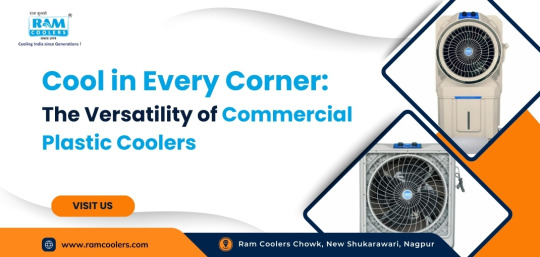
Discover the versatility of commercial plastic coolers - durable, energy-efficient, and perfect for businesses needing reliable cooling in any space.
Do Visit: https://www.ramcoolers.com/the-versatility-of-commercial-plastic-coolers/
#Duct Coolers#Smart Cooling Solution#Energy-efficient cooling#Home cooling solutions#Smart Cooling Solution for Home or Office#Office air cooling#Ducted air coolers#Eco-friendly cooling#Airflow optimization#Cost-effective cooling
1 note
·
View note
Text
Smart Fans Revolutionizing the Home
The Smart Home Industry is rapidly evolving, and one brand that stands out is SwitchBot. Their innovative approach to creating smart devices is truly impressive, particularly with their smart fans. These fans not only provide a refreshing breeze but also integrate seamlessly with your smart home ecosystem.
SwitchBot's smart fan offers features that enhance comfort and convenience. With remote control capabilities, you can easily adjust settings from anywhere in your home. Plus, it can be programmed to operate automatically based on your preferences, ensuring that your living space is always just the way you like it.
Additionally, the energy efficiency of SwitchBot's smart fan is a game changer. By optimizing airflow, it helps reduce energy consumption while keeping you cool during those hot days. This not only benefits your comfort but also contributes to a more sustainable lifestyle.
Overall, SwitchBot is leading the charge in the smart fan category, making it easier than ever to create a comfortable and efficient home environment. Embrace the future of home automation with SwitchBot's smart fan and enjoy the perfect blend of technology and comfort!
#energy efficiency#smart home#sustainable lifestyle#smart fans#comfort#airflow optimization#remote control
0 notes
Text
Energy Efficiency in Backward Blowers: How They Save Operational Costs
How Backward Blowers Reduce Power Consumption
Backward blowers, specifically backward-curved and backward-inclined fans, are designed for high efficiency and reduced energy consumption. Their unique blade orientation minimizes air resistance, allowing them to achieve greater airflow with lower power input. This results in:
Higher static efficiency: The curved blades reduce turbulence and friction, ensuring smoother airflow.
Lower operational costs: Compared to forward-curved fans, backward blowers require up to 20% less energy for the same output.
Reduced maintenance: The self-cleaning design prevents dust accumulation, reducing wear and tear.
Case Studies on Energy Savings
Case Study 1: HVAC System Optimization
A commercial building replaced its forward-curved fans with backward-inclined blowers from Central Blower. The result?
Energy savings of 18% per year
Reduced noise levels by 30%
Lower maintenance costs by 25% due to self-cleaning properties
Case Study 2: Industrial Ventilation Upgrade
A manufacturing facility switched to backward blowers for its material handling ventilation system. Key results:
25% reduction in power consumption
40% increase in airflow efficiency
Fewer breakdowns and 15% longer equipment lifespan
Choosing the Right Motor and Impeller Design
Selecting the correct motor and impeller is crucial for optimizing energy efficiency. Here’s what to consider:
Motor Efficiency
Choose EC (Electronically Commutated) motors for precise speed control and reduced energy waste.
Opt for premium efficiency (IE3 or IE4) motors to maximize savings.
Ensure compatibility with Variable Frequency Drives (VFDs) for adjustable airflow.
Impeller Design
Backward-Curved Impellers: Best for low to medium pressure applications, offering quieter operation and high efficiency.
Backward-Inclined Impellers: Ideal for high-pressure systems, ensuring better performance in industrial setups.
FAQs
1. How much energy can I save by switching to backward blowers?
Savings depend on your application, but many businesses report 15-25% energy reduction after upgrading.
2. Are backward blowers suitable for HVAC systems?
Yes! They are commonly used in air handling units (AHUs), cooling towers, and ventilation systems due to their efficiency and quiet operation.
3. Do backward blowers require frequent maintenance?
No. Their self-cleaning design reduces dust accumulation, leading to lower maintenance needs and longer service life.
Call to Action (CTA)
Upgrade to Energy-Efficient Backward Blowers Today! Reduce your operational costs and improve airflow efficiency with Central Blower’s backward-curved and backward-inclined blowers. Contact us today for a free consultation and energy savings estimate!
#Backward blowers#Energy-efficient fans#Industrial ventilation#HVAC system efficiency#Backward-curved impellers#Backward-inclined fans#Airflow optimization#Power-saving blowers
0 notes
Text
Essential Steps to Get Your Home Ready for a New AC System
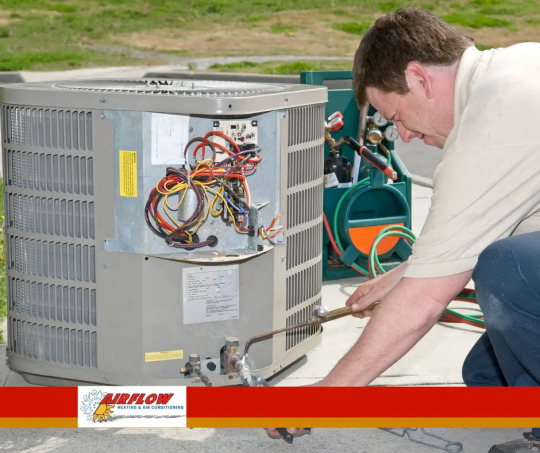
A new air conditioning installation is a significant investment that can improve your home's comfort and energy efficiency. Proper preparation ensures a smooth process and maximizes the performance of your new system. Whether you're replacing an outdated unit or installing an air conditioner for the first time, following essential steps can help you get your home ready for the upgrade.
Assess Your Home’s Cooling Needs
Before scheduling an air conditioning installation, it’s important to evaluate your home’s specific cooling requirements. Factors such as the size of your home, insulation quality, number of occupants, and local climate all play a role in determining the right AC unit. Consulting with a professional HVAC technician can help you choose an appropriately sized system that will efficiently cool your space without excessive energy consumption.
Choose the Right Air Conditioning System
Selecting the best AC system for your home is crucial for long-term comfort and efficiency. There are several types of air conditioning units available, including:
Central Air Conditioners: Ideal for whole-home cooling, these systems use ductwork to distribute conditioned air evenly.
Ductless Mini-Splits: A great option for homes without ductwork, providing zoned cooling for different areas.
Window or Portable Units: Suitable for smaller spaces or supplemental cooling but not ideal for whole-home use.
Each type of air conditioner has its advantages, and an experienced HVAC technician can guide you in choosing the best system based on your home's layout and cooling needs.
Inspect and Prepare Your Ductwork
If your new air conditioning installation involves a central air system, it’s essential to ensure your ductwork is in good condition. Leaky or dirty ducts can reduce efficiency and cause uneven cooling. Have a professional inspect and seal any leaks before the installation process begins to maximize airflow and system performance.
Clear the Installation Area
To facilitate a hassle-free air conditioning installation, clear the area where the indoor and outdoor units will be placed. Remove any furniture, decor, or obstacles that might obstruct the installation process. For the outdoor unit, ensure the surrounding area is free from debris, plants, and other obstructions to allow for proper airflow and system efficiency.
Ensure Proper Electrical Setup
A new AC system may require electrical upgrades to handle the power load efficiently. Check with your HVAC technician or electrician to confirm that your home’s electrical panel and wiring meet the necessary requirements. This step prevents issues such as system malfunctions or power failures due to inadequate electrical capacity.
Improve Home Insulation and Sealing
To maximize the efficiency of your air conditioning installation, evaluate your home’s insulation and sealing. Proper insulation helps maintain consistent indoor temperatures and reduces the workload on your AC unit. Sealing gaps around windows, doors, and vents prevents cool air from escaping and minimizes energy waste, leading to lower utility bills.
Consider Smart Thermostat Integration
Upgrading to a smart thermostat can enhance the performance of your new AC system by providing precise temperature control and energy savings. Many modern air conditioning installations include compatibility with smart thermostats, allowing you to program cooling schedules, monitor energy usage, and adjust settings remotely.
Plan for Routine Maintenance
Once your air conditioning installation is complete, regular maintenance is key to ensuring longevity and optimal performance. Schedule periodic inspections, clean or replace filters, and check refrigerant levels to keep your system running efficiently. A well-maintained AC unit reduces the risk of breakdowns and extends its lifespan, providing reliable cooling for years to come.
Final Thoughts on Preparing for Air Conditioning Installation
Proper preparation is crucial for a successful air conditioning installation. By assessing your cooling needs, selecting the right system, preparing your home, and optimizing insulation, you can ensure maximum efficiency and comfort. Consulting with a qualified HVAC professional will help streamline the process and guarantee a seamless installation. Investing time in preparation will not only improve your AC’s performance but also enhance your home’s overall energy efficiency and indoor comfort.
#AC Installation#Air Conditioning Installation#HVAC Installation#Central AC Installation#Ductless AC Installation#Home Cooling System#Energy-Efficient AC#New AC Unit#Residential AC Installation#Professional AC Installation#HVAC System Setup#Air Conditioner Replacement#Cooling System Installation#Best AC for Home#Smart Thermostat Installation#HVAC Ductwork#Ventilation System#Airflow Optimization#Home Comfort Solutions#AC Efficiency Tips#Climate Control#Indoor Air Quality#Heat Pump Installation#Air Conditioning Services#Cooling System Upgrade.
0 notes
Text
The Connection Between Clean Dryer Vents and HVAC Performance
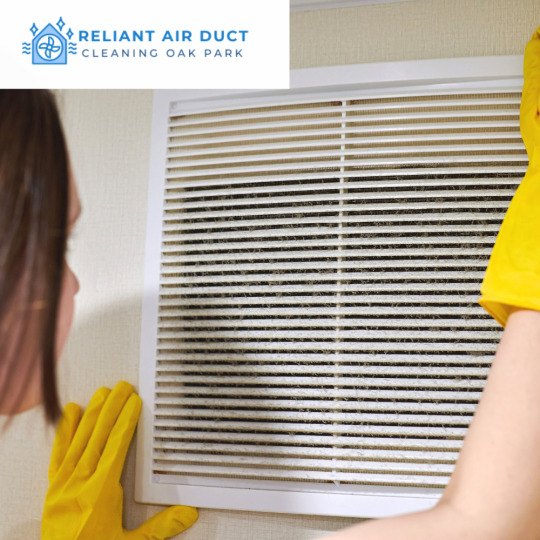
The efficiency of your HVAC system hinges on various factors, but one key element often overlooked is the cleanliness of your dryer vents. Clogged vents can create serious complications, from reducing airflow to putting undue strain on your entire ventilation system. By ensuring your vents are clear, you not only boost HVAC efficiency but also cut energy costs, enhance air quality, and extend the life of your air ducts.
How Blocked Dryer Vents Strain Your HVAC System
When lint and debris accumulate in dryer vents, they restrict airflow, forcing your HVAC system to work overtime to maintain circulation throughout your home. This extra effort accelerates wear on vital components, leading to decreased efficiency and potential system failures. Left unchecked, blockages can result in costly repairs or even necessitate a complete replacement of your air ducts. Routine vent maintenance helps your HVAC system perform at its best and prevents avoidable disruptions.
Boosting Energy Efficiency and Reducing Utility Bills
Clean dryer vents play a surprisingly big role in energy efficiency. Obstructions force your system to consume more power as it struggles to maintain proper airflow and temperature. On the other hand, regularly maintained vents allow your HVAC to function effortlessly, reducing energy usage and cutting down utility costs. Homeowners who prioritize vent care often enjoy smoother system operation, fewer service calls, and a more sustainable home.
Cleaner Vents, Cleaner Air
Dirty vents and ducts are a breeding ground for allergens, mold, and other airborne pollutants. These contaminants circulate through your home, potentially causing discomfort or health issues, especially for those with allergies or respiratory sensitivities. By keeping your dryer vents clean, you reduce these risks and create a fresher, healthier indoor environment. Early intervention also prevents widespread contamination, keeping your ductwork in optimal condition.
Preserving Your HVAC System
Ignoring dryer vent maintenance can lead to long-term damage. Clogged vents increase system pressure, causing overheating and, eventually, component failure. Such issues often require expensive fixes or replacements. Regular cleaning is a straightforward yet powerful way to safeguard your system’s performance and prevent costly damage. By staying proactive, you ensure your HVAC system runs reliably, keeps your home comfortable, and avoids unnecessary expenses.
#dryer vent cleaning#air duct maintenance#HVAC efficiency#indoor air quality#energy savings#airflow optimization#HVAC system maintenance#home ventilation
0 notes
Text
Dreame's Innovative Low-Watt Hair Dryer: A Game-Changer for Smart Homes
In the ever-evolving world of smart home technology, Dreame has emerged as a pioneering brand, offering cutting-edge solutions that seamlessly blend functionality and energy efficiency. One of their latest innovations, the low-watt hair dryer, is poised to revolutionize the way we approach personal care in our connected homes.
Designed with both style and sustainability in mind, Dreame's low-watt hair dryer boasts an impressive array of features that set it apart from traditional hair dryers. With its sleek and ergonomic design, this hair dryer not only looks great on your bathroom counter but also delivers exceptional performance while consuming significantly less energy.
At the heart of this remarkable device lies advanced technology that optimizes airflow and heat distribution, ensuring fast and efficient drying without compromising on hair health. The low-watt hair dryer utilizes cutting-edge ceramic and ionic technologies to minimize heat damage, leaving your locks smooth, shiny, and frizz-free.
But what truly sets Dreame's low-watt hair dryer apart is its seamless integration with smart home systems. Through voice commands or a dedicated app, you can effortlessly control and customize the dryer's settings, creating personalized drying experiences tailored to your unique hair type and preferences.
Imagine waking up to a fully automated morning routine, where your smart home system initiates the low-watt hair dryer, adjusting the temperature and airflow to your desired levels, all while you enjoy your morning coffee. This level of convenience and efficiency is no longer a dream; it's a reality with Dreame's innovative smart home solutions.
As the demand for sustainable and energy-efficient products continues to grow, Dreame's low-watt hair dryer stands as a testament to the brand's commitment to creating products that not only enhance our daily lives but also contribute to a greener future. By reducing energy consumption without sacrificing performance, this hair dryer aligns perfectly with the principles of eco-friendly living.
In the realm of smart home technology, Dreame is paving the way for a future where convenience, efficiency, and sustainability seamlessly coexist. With their low-watt hair dryer, they have demonstrated their ability to push boundaries and redefine what it means to live in a truly connected and intelligent home.
#Dreame#low-watt hair dryer#smart home technology#energy efficiency#personal care#sustainability#advanced technology#airflow optimization#heat distribution#ceramic technology#ionic technology#hair health#smart home integration#voice commands#customizable settings#automated routines#eco-friendly living#connected home
0 notes
Text
The Benefits of Using Professional Duct Specialists for Leak Repairs
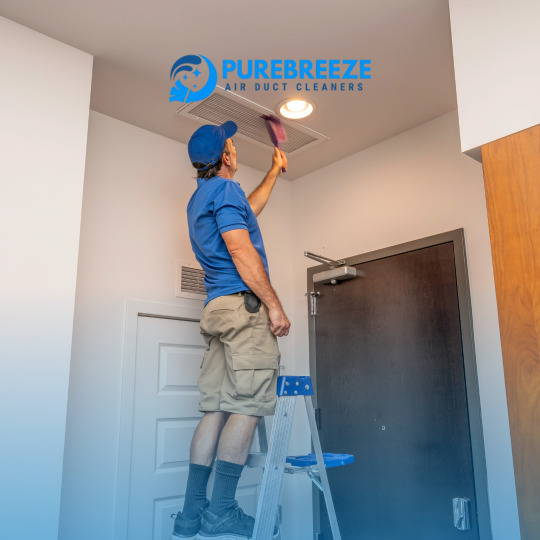
Your home’s air ducts are essential for maintaining a comfortable and energy-efficient environment. Over time, these ducts can develop leaks or cracks, leading to poor air distribution, increased energy bills, and compromised indoor air quality. Relying on professional duct specialists for air duct repair ensures these issues are resolved effectively, keeping your HVAC system in optimal condition.
Why Air Duct Repair Matters
Air duct leaks can significantly impact your home’s comfort and energy efficiency. These leaks allow conditioned air to escape, forcing your HVAC system to work harder. This not only increases energy consumption but also leads to uneven temperatures in different areas of your home. Professional air duct repair addresses these problems, improving system performance and enhancing comfort.
Expertise in Identifying and Sealing Duct Leaks
Professional duct specialists have the tools and expertise to locate leaks that are often hidden from view. Using advanced diagnostic equipment, they can identify areas where air is escaping and seal them effectively. This ensures your ducts are working efficiently, preventing further strain on your HVAC system.
Improved Energy Efficiency
One of the main benefits of air duct repair is enhanced energy efficiency. Leaky ducts force your HVAC system to run longer to maintain the desired temperature, resulting in higher energy bills. Sealing these leaks reduces air loss, which helps your system operate more efficiently and lowers your utility costs.
Better Indoor Air Quality
Leaky ducts can introduce dust, allergens, and pollutants into your home’s air supply, negatively affecting indoor air quality. This can be particularly problematic for individuals with allergies or respiratory conditions. By sealing these leaks, professional air duct repair services help keep contaminants out, ensuring a healthier living environment.
Extending the Lifespan of Your HVAC System
Timely air duct repair reduces the strain on your HVAC system. When your ducts are functioning properly, your system doesn’t have to work as hard to distribute air. This minimizes wear and tear, helping to extend the lifespan of your HVAC unit and reducing the likelihood of expensive repairs or replacements in the future.
Take Advantage of Professional Air Duct Repair
Investing in professional air duct repair is a smart decision for maintaining a comfortable, energy-efficient, and healthy home. By addressing duct leaks promptly, you can improve your HVAC system’s performance, lower energy costs, and enjoy better indoor air quality. Contact a trusted duct specialist today to schedule an inspection and experience the benefits of expert leak repairs.
#Air Duct Repair#Professional Air Duct Repair#Residential Air Duct Repair#Commercial Air Duct Repair#HVAC Duct Repair#Duct Leak Repair#Duct Sealing#Air Duct Maintenance#Airflow Optimization#Indoor Air Quality Improvement#Energy Efficiency#HVAC System Repair#Ductwork Repair Services#Leaky Duct Solutions#Air Duct Inspection#Air Duct Replacement#HVAC Performance#Air Duct Cleaning and Repair#Cost-Effective Duct Repair#Duct Damage Repair#Air Duct Repair Specialists#Air Duct Repair Services Near Me#Home Energy Savings#Air Duct Leak Detection#Improved Air Circulation.
0 notes
Text
Maximize Efficiency with Professional Duct Repair & Replacement
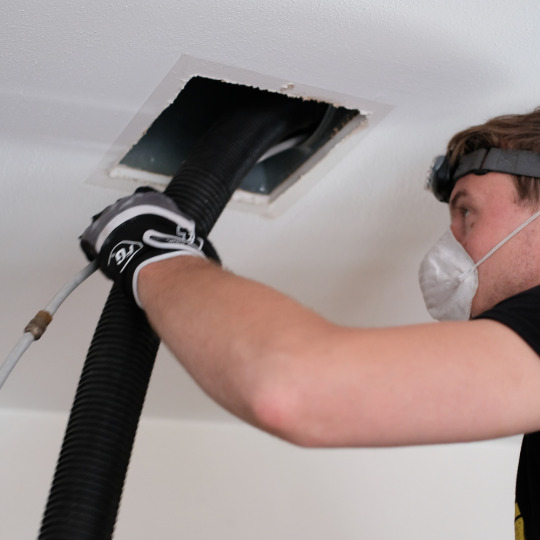
Ensuring your home's heating and cooling system operates at peak efficiency is crucial for comfort, energy savings, and overall home health. Duct repair and replacement are essential services that address leaks, damage, and inefficiencies in your HVAC system. YS Attic Insulation Inc specializes in identifying and solving these issues, providing professional duct services that improve air quality, reduce energy bills, and extend the life of your HVAC system. By choosing YS Attic Insulation Inc for your ductwork needs, you're investing in a more efficient, healthier home environment. Let us help you achieve optimal air circulation and energy efficiency through expert duct repair and replacement.
YS Attic Insulation Inc 2130 N Arrowhead Ave Unit 205 D San Bernardino, CA 92405, United States (909)488-0763
#duct repair#duct replacement#HVAC efficiency#air quality improvement#energy savings#heating and cooling#leak detection#professional duct services#HVAC maintenance#indoor comfort#airflow optimization#energy-efficient home
0 notes
Text
Boîtier Moyen-Tour NZXT H6 Flow RGB, comprend 3 Ventilateurs 120 mm RGB | Panneaux panoramiques en Verre | Noir
Profitez d'une remise de 10% sur le boîtier moyen-tour NZXT H6 Flow RGB, conçu pour offrir des performances thermiques exceptionnelles et un éclairage RGB spectaculaire. Ce modèle élégant et compact est idéal pour les configurations de jeux haut de gamme.
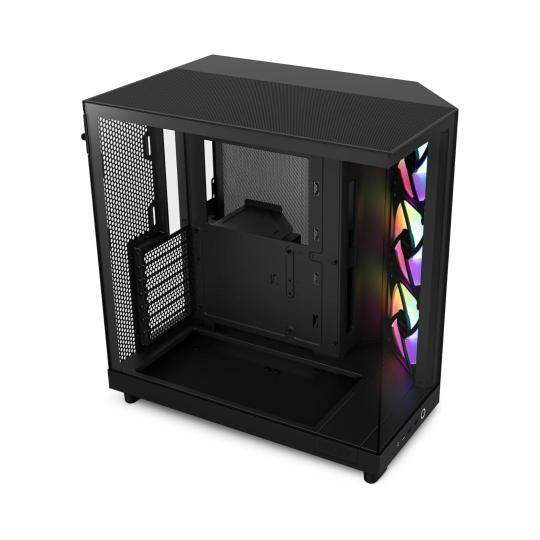
Boîtier Moyen-Tour NZXT H6 Flow RGB, comprend 3 Ventilateurs 120 mm RGB | Panneaux panoramiques en Verre | Noir - LaRevueGeek.com
#NZXT H6 Flow RGB#boîtier moyen-tour#double chambre#airflow#10% réduction#verre panoramique#3 ventilateurs RGB#refroidissement optimal#gestion des câbles#haute performance#noir#design compact
0 notes
Text
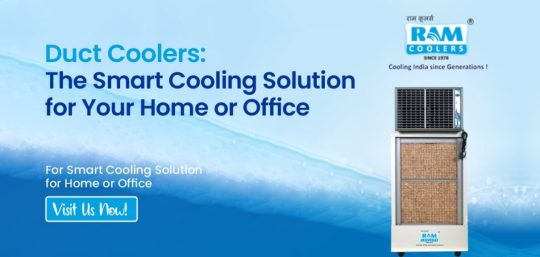
Discover how duct coolers provide an energy-efficient, cost-effective cooling solution for your home, ensuring comfort while saving electricity.
Do Visit: https://www.ramcoolers.com/duct-coolers-the-smart-cooling-solution/
#Duct Coolers#Smart Cooling Solution#Energy-efficient cooling#Home cooling solutions#Smart Cooling Solution for Home or Office#Office air cooling#Ducted air coolers#Eco-friendly cooling#Airflow optimization#Cost-effective cooling
1 note
·
View note
Text
The Future of Efficiency: Why Direct Drive Blowers are a Game-Changer
In industries where air movement is critical, choosing the right blower can significantly impact efficiency, reliability, and costs. Direct drive blowers from Central Blower Co. are revolutionizing the market with their streamlined design, reduced maintenance needs, and exceptional performance.
How One Manufacturer Cut Downtime by 30%
Take the case of a mid-sized food processing plant struggling with frequent breakdowns in their traditional belt-driven blower system. After switching to direct drive blowers from Central Blower Co., they reported a 30% reduction in downtime and a 15% boost in energy efficiency. The key was the blower’s simplified design, which eliminated belts and pulleys prone to wear and tear.
The Advantages of Direct Drive Technology
According to industry expert John Miller, “Direct drive blowers offer superior reliability due to fewer moving parts. They’re especially effective in environments demanding consistent airflow and minimal maintenance.”
Central Blower Co.’s products stand out due to their robust engineering, which ensures longevity even in demanding applications like HVAC systems, dust collection, and industrial ventilation.
By the Numbers: The Power of Direct Drive
20-30% Energy Savings: Compared to belt-driven alternatives, direct drive systems are significantly more efficient.
40% Fewer Maintenance Hours: Businesses save time and costs by eliminating components like belts that need regular replacement.
5-Year ROI: Many facilities recoup their investment within five years due to reduced operating expenses.
A Maintenance Engineer’s Perspective
Imagine being a maintenance engineer tasked with minimizing equipment failures during peak production hours. With a direct drive blower, you no longer worry about belt slippage or misalignment. Instead, you focus on optimizing airflow and ensuring seamless operations—just like Central Blower Co.’s clients in industries ranging from pharmaceuticals to manufacturing.
Choosing the Right Blower
When considering a direct drive blower, keep these factors in mind:
Application Requirements: Ensure the blower can handle your specific airflow and pressure needs.
Energy Efficiency Ratings: Look for models that deliver maximum performance with minimal power consumption.
Durability: Prioritize blowers designed for longevity, even in harsh conditions.
Central Blower Co. offers a range of customizable solutions to meet diverse industry needs. Their experts can help you select the perfect model for your application.


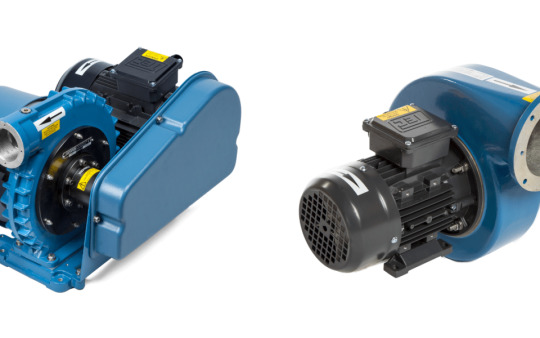
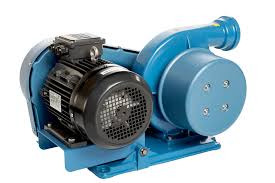
Join the Conversation
Have you considered upgrading to a direct drive blower? What challenges are you facing with your current system? Share your thoughts in the comments or contact us to learn more about Central Blower Co.’s solutions.
#Direct Drive Blowers#Central Blower Co#Industrial Solutions#Efficiency Matters#Airflow Optimization#Sustainable Solutions
0 notes
Text
Air Tray Dryer - ATD Manufacturer in India
Manufacturer, Supplier and Exporter of Air Tray Dryer - ATD, Control over temperature and airflow, optimal drying conditions for many applications in India.
Air Tray Dryer - ATD, Control over temperature and airflow, optimal drying conditions for many applications, India.
#Air Tray Dryer - ATD#Control over temperature and airflow#optimal drying conditions for many applications#India
0 notes
Text

Aircraft engine types ✈️
✈️Turbo-Shaft: Used in helicopters and some fixed-wing aircraft, it features a compressor, combustion chamber, and turbine. The turbine drives a power shaft via a free (power) turbine, which powers the rotor or propeller through a gearbox, rather than producing direct thrust. Exhaust gases are expelled separately.
✈️Turbo-Prop: Similar to a turbo-shaft, it powers a propeller via a gearbox. Air is compressed, mixed with fuel, and burned in the combustion chamber. The turbine extracts energy to drive the propeller, with some exhaust thrust. It’s efficient for low-speed, short-range flights.
✈️Turbo-Fan: Common in commercial jets, it has a large fan at the front, high- and low-pressure compressors, a combustion chamber, and turbines. The fan accelerates air around the core (bypass air) for thrust, while the core produces additional thrust via exhaust. It’s efficient for high-speed, long-range flights.
✈️Turbo-Jet: An older design, it compresses air, burns fuel in the combustion chamber, and expels exhaust through a nozzle for thrust. It lacks a bypass fan, making it less efficient but capable of high speeds. Used in early jet fighters and some supersonic aircraft.
✈️Ram-Jet: Operates at high speeds (Mach > 1), using forward motion to compress air in the inlet. Fuel is injected and burned in the combustion chamber, and the exhaust is expelled through a nozzle for thrust. It has no moving parts but only works at high speeds.
✈️Scramjet: A supersonic combustion ramjet, designed for hypersonic speeds (Mach > 5). Air enters at supersonic speeds, is compressed, mixed with fuel, and burned in a combustion chamber, with exhaust expelled for thrust. It’s used in experimental hypersonic vehicles.
✈️Rocket: Uses stored propellants (fuel and oxidizer) in a pressure vessel. Propellants are burned in a combustion chamber, and the high-pressure exhaust is expelled through a nozzle for thrust. It operates in space since it doesn’t rely on atmospheric oxygen.
✈️Gas Turbine: Similar to a turbo-shaft, it’s used for power generation or auxiliary power units. Air is compressed, burned with fuel, and the exhaust drives a power turbine, which can power generators or other systems. Bleed valves and discharge ports manage airflow and pressure.
Each engine type is optimized for specific applications, balancing efficiency, speed, and operational environment.
@Airmainengineer via X
819 notes
·
View notes
Text
The Importance of Properly Sealing Duct Leaks for HVAC Efficiency

Air duct repair plays a significant role in ensuring that your HVAC system operates efficiently. Leaks in ductwork can cause substantial energy losses, increase utility bills, and reduce indoor air quality. Properly sealing duct leaks is essential for maintaining a comfortable environment while minimizing energy consumption. Let’s explore why sealing duct leaks is so important for HVAC efficiency and the methods used in the process.
The Impact of Leaks on Air Duct Repair and HVAC Efficiency
When it comes to air duct repair, one of the primary concerns is energy loss due to leaks. When ducts have gaps or cracks, conditioned air escapes, causing the HVAC system to work harder to maintain the desired temperature. This not only increases energy costs but also shortens the lifespan of the system. By sealing these leaks, you can significantly improve HVAC efficiency and reduce the need for frequent repairs.
Common Signs Indicating the Need for Air Duct Repair
To maintain an efficient HVAC system, it is important to recognize the signs that your ductwork may need air duct repair. Some common indicators include:
Inconsistent Temperatures: If some rooms are warmer or cooler than others, there could be leaks in the ductwork.
Higher Energy Bills: Leaks can cause the system to work harder, resulting in increased utility costs.
Poor Air Quality: Leaky ducts can allow dust, allergens, and other contaminants to enter the airflow, reducing indoor air quality.
Techniques Used for Properly Sealing Duct Leaks
Sealing duct leaks requires a combination of specialized tools and advanced techniques. Here are some commonly used methods in air duct repair:
Mastic Sealant: A thick paste that is applied around seams and joints in the ductwork to create a durable seal. It is commonly used due to its flexibility and long-lasting properties.
Aerosol Duct Sealants: This method involves spraying a sealant inside the ducts. The sealant particles adhere to the edges of leaks and gradually build up to form a seal, effectively closing the gaps.
UL-Listed Foil Tape: This tape is designed for HVAC applications and is used to seal smaller leaks. It is more effective and long-lasting compared to regular duct tape.
Benefits of Effective Air Duct Repair for HVAC Efficiency
Addressing leaks through air duct repair can provide numerous advantages, including:
Energy Savings: Sealing leaks reduces the workload on the HVAC system, leading to lower energy consumption and reduced utility bills.
Enhanced Comfort: Properly sealed ducts help maintain consistent temperatures throughout the building, providing a more comfortable indoor environment.
Improved Air Quality: Sealing leaks prevents contaminants from entering the ductwork, resulting in cleaner air inside your home.
Investing in professional air duct repair services to seal duct leaks can significantly boost your HVAC system's performance and energy efficiency. Schedule an inspection with a qualified technician to identify any potential issues and ensure that your ducts are properly sealed.
#Air Duct Repair#Residential Air Duct Repair#Commercial Air Duct Repair#Air Duct Leak Sealing#HVAC Duct Repair#Ductwork Repair Services#Emergency Air Duct Repair#Professional Air Duct Repair#Air Duct Maintenance#Air Duct Inspection and Repair#Duct Repair Specialists#Air Duct Restoration#Duct Sealing Solutions#Indoor Air Quality Improvement#Energy-Efficient Duct Repair#Airflow Optimization#Advanced Duct Repair Techniques#Duct Leak Detection#HVAC System Efficiency#Affordable Air Duct Repair.
0 notes
Text
Hi! imagine when you trip over a rock on the streets of Amphoreus and they just
Anaxagoras, adjusting your pillows precisely: "the neck angle must remain at 37 degrees to optimize airflow." where the fuck did you get a pillow?
Pie-non: "She needs comfort! not geometry, oh my stars—"
Mydeimos: "Bye." (covers your ears. glares. carries you while the professor debates the student.)
#im happy I have so many ideas rn#honkai star rail#anaxa#anaxagoras#anaxagorgeous#anaxa x reader#hsr#hsr x reader#honkai star rail x reader#hsr anaxa#honkai star rail anaxa#anaxagoras x reader#phainon hsr#phainon#phainon x reader#phainon x you#hsr characters#mydeimos#hsr mydei#mydei#mydei x reader
351 notes
·
View notes
Text
Design Procedures for Cooling-Only Systems: Detailed Airflow Calculation Methodology
Technical Deep Dive: Airflow Calculation Methods for Cooling-Only Systems Following our 8-step methodology for designing cooling-only HVAC systems, this technical supplement provides detailed insights into the critical airflow calculation methods essential for Step 3: Calculate Required Zone and Space Supply Airflow Rates. Understanding these calculation approaches enables engineers to select…
#air distribution design#CFM calculation methods#coincident load calculation#cooling system design#cooling-only systems#duct leakage adjustment#HVAC airflow calculation#HVAC engineering formulas#HVAC system efficiency#HVAC system optimization#peak coincident loads#peak load sizing#sensible cooling load#space airflow distribution#space load diversity#supply temperature criteria#terminal unit sizing#zone airflow equations#zone sizing methods#zone terminal airflow
0 notes